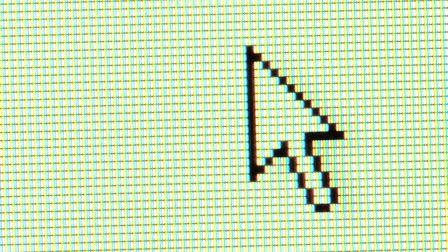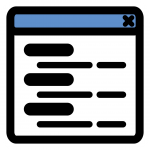Six Ways The Most Productive People Send Emails
There’s nothing like an overcrowded inbox to make you long for the days of smoke signals and carrier pigeons.
But unless you’ve been living under a rock without a Wi-Fi signal, email plays a huge role in your work and personal communication. In fact, we’re willing to bet you have yours open in another tab right now.
Email is so prevalent that last year, workers worldwide collectively sent and received about 112.5 billion business emails each day, according to The Radicati Group, a technology market research firm. The average user sent and received 122 work messages daily. (Now that would be a lot of pigeons.)
That’s why making sure your message gets read can seem almost impossible. But there are some small things you can do to make your emails more likely to get a response.
To help you cut through the noise and really get your point across, we consulted productivity expert Chris Bailey, author of the The Productivity Project: Accomplishing More by Managing Your Time, Attention, and Energy for quick tips on sending emails your colleagues will actually want to read.
1. They Keep It Short And Sweet
Take it from Shakespeare: “Brevity is the soul of wit.”
Turns out, this holds true whether you’re writing Hamlet or just a note: According to a 2015 user analysis from email scheduler Boomerang, messages that fell between 50 to 125 words were most likely to get replies, with response rates a little higher than 50%.
One strategy Bailey uses is keeping his emails to three sentences or less. “If an email needs to be substantially longer than three sentences, it might be a conversation that’s better had over the phone.”
“Our thoughts can usually be expressed so much more simply than the way they first come to us,” he explains. “Constraints [like the three-sentence rule] force us to articulate our thoughts so that we understand them better ourselves, and in turn, others can understand us better too.”
Also, no need to overdo it on the sign off.
“There’s nothing more annoying than a 1,000-word signature,” Bailey jokes. “I usually just sign mine ‘Chris’ and leave it at that.”
2. They Make Timing Count
The Boomerang analysis determined that, in general, messages sent during lunchtime and at the start of working hours had the highest response rates, as people arriving or returning to their desks often check their messages immediately. So if you have an urgent message, sending it first thing in the morning can yield better results.
Additionally, Bailey cautions against sending emails too late in the day: “I don’t like to send emails past 5 or 6 p.m.,” he says. “I still sometimes type an email past those hours—but then I’ll use some kind of ‘send later’ plug-in to send them in the morning.”
Using a scheduling service to send emails later is a win-win-win: You can cross the email off your to-do list now, send it at a time in the morning when it’s more likely to get read, and, Bailey adds, set appropriate time boundaries about emails.
“So much of productivity is managing other people’s expectations,” he explains. “By sending emails only within a certain time frame, you end up managing people’s expectations of when you’re going to respond—so they won’t expect immediate responses from you at all hours of the day.”
Don’t want to receive urgent emails at 2 a.m.? Then don’t send them.
[Related: How To Succeed At Work The Lazy Way]
3. They Press Pause Before Replying
Do you hold the world record for sprint to the “reply” button? Next time, try to take a deep breath before you hit “send.”
“I’ve tried to make a habit of sitting on emails,” Bailey says. “When you hold off on responding, you have more time to connect the dots, you can form your thoughts, and ultimately, you can communicate better.”
By taking time to respond to an email, you give yourself more opportunity to craft a succinct, effective note that will get your message across. And you save yourself from having to send additional emails every time you gather a bit of new information—which makes your reader’s job a lot easier.
4. They Express Themselves
Another thing that increases your response rate? Show a little emotion.
A perfectly worded impersonal email can read as uninterested or boring. The Boomerang analysis found that emails that used moderately positive or moderately negative language (words like “great” or “bad”) elicited 10% to 15% more responses than emails that were totally neutral.
Of course, that doesn’t mean you should overload your emails with fawning praise or aggressive criticism—but using slightly more interesting language can help readers remember there’s a human being behind the email and, in turn, encourage them to respond.
5. They Free Up Their Bandwidth With A “Waiting For” Folder
No one likes the waiting game—but in a world of crowded inboxes, workplace collaboration, and “out of office” emails, we’re all playing it.
“Whenever you send an important email, it becomes an unresolved uncertainty in your head, which in turn can become a source of mental stress,” Bailey says.
To combat that anxiety, he recommends keeping a “Waiting For” folder in your email. When you send an important email, go to your sent box and add it to your Waiting For folder, where you’ll be able to quickly scan through everything you’re waiting for a response on.
“That list helps me make sure nothing slips through the cracks, and more importantly, helps me feel less uncertainty about my work. When you have unresolved commitments all in your head, it’s easy to feel overwhelmed—so something like this is a powerful way to stay on top of the unknown,” Bailey says.
6. They Know When Email Isn’t The Answer
“Email supports our work,” says Bailey, “but it isn’t our work. Writing reports, engineering products—those kinds of things are our work.”
To that end, it’s important to recognize when email might be becoming more of a nuisance than a powerful tool.
“If you’re constantly drowning in long email chains when collaborating with others, that might be a cue that it’s time to invest in a different system,” Bailey says. That could be as simple as trying out a new project management system (Bailey likes Basecamp) or picking up the phone.
And when all else fails, you can actually meet in person!
[Related: Your Ultimate Work-From-Home Productivity Guide]
This article originally appeared on LearnVest and is reprinted with permission.
related video: 2 useless phrases you need to eliminate from your emails immediately
Fast Company , Read Full Story
(37)













